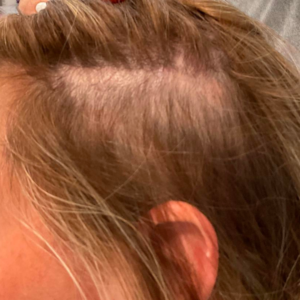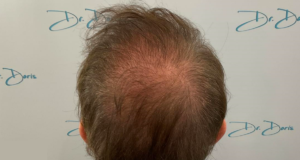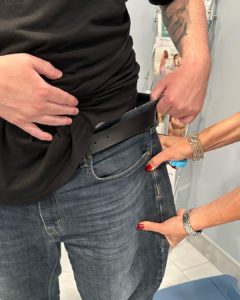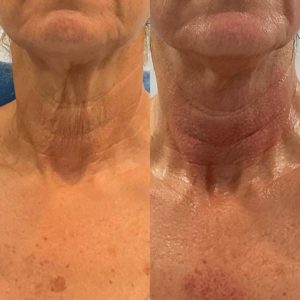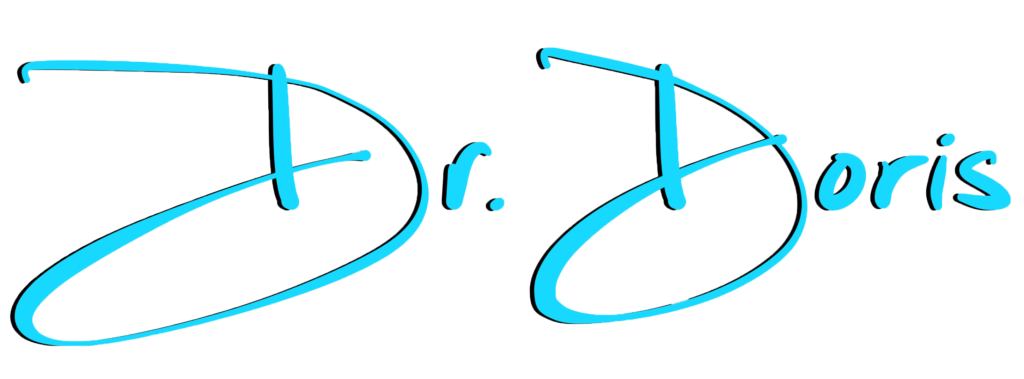I am often been asked about the differences between Dysport, Botox, and Xeomin. Each of these injectables have their own unique benefits and potential drawbacks, and choosing the right one can feel overwhelming. In this article, I’ll break down everything you need to know about Dysport, Botox, and Xeomin. We’ll cover their benefits, dangers, how they work, differences, efficacy, safety, and ultimately help you decide which might be the best option for you. I’ll also answer seven common questions to clear up any lingering doubts.
Benefits of Dysport, Botox, and Xeomin
Dysport
Dysport is known for its fast-acting results, typically showing effects within 2–3 days. It spreads more easily, making it ideal for treating larger areas like the forehead. Results can last 3–4 months, sometimes longer depending on individual factors. Additionally, some patients require fewer units of Dysport than Botox to achieve similar results.
Botox
Botox is the most studied botulinum toxin and has a wide range of cosmetic and medical applications. With decades of use, Botox’s safety and efficacy are well-documented. Botox takes up to 7 days or longer to reach peak effects that generally last between 3–6 months. Due to its popularity, dosages and application techniques are highly refined and standardized.
Xeomin
Xeomin is free from complexing proteins, which might reduce the risk of developing resistance. It provides natural results similar to Dysport. Because it’s a “naked” injectable, the body is less likely to develop antibodies against it. Results last around 3–4 months, comparable to Dysport and Botox. The absence of additives can reduce the likelihood of allergic reactions.

Dangers of Dysport, Botox, and Xeomin
Dysport
Its broader spread can sometimes affect unintended muscles, potentially causing issues like drooping eyelids;however,r your provider can use a tighter dilution to minimize this. As with any injectable, there’s a risk of allergic reactions, though they’re rare. Some people experience mild side effects like headaches, pain at the injection site, or flu-like symptoms. Repeated use might lead to resistance, though this is less likely than with Botox. These risks can be minimized by choosing a trained professional for your treatment.
Botox
Common temporary side effects include bruising and swelling at the injection site. As with all neurotoxin, incorrect placement can lead to temporary drooping of the eyelids or eyebrows. Some users report mild headaches and flu-like symptoms post-injection. Although rare, some individuals might experience allergic reactions.
Xeomin
Pain, swelling, or redness at the injection site can occur. Incorrect application can also cause unintended muscle weakness. Similar to Dysport and Botox, Xeomin can cause headaches in some individuals. As with any injectable, there’s a risk of an allergic reaction, though the absence of complexing proteins might reduce this risk.
How Dysport, Botox, and Xeomin Work
Dysport
Dysport is a form of botulinum toxin type A, derived from the bacterium Clostridium botulinum. When injected, it temporarily blocks the communication between nerves and muscles. This blockage prevents muscles from contracting, which smooths out wrinkles and fine lines. Dysport’s unique formulation allows it to spread over a broader area, making it effective for larger treatment zones.
Botox
Botox, also made from botulinum toxin type A, works similarly by blocking nerve signals to the muscles. This inhibition results in the temporary relaxation of the targeted muscles, reducing the appearance of wrinkles. Botox is precise, allowing for targeted treatments of small areas like frown lines and crow’s feet.
Xeomin
Xeomin is also a botulinum toxin type A product but differs in its formulation. It contains only the active neurotoxin, without accessory proteins. This “naked” formulation works by blocking the release of acetylcholine, a chemical messenger that signals muscle contraction. Without this signal, muscles relax, and wrinkles diminish.
What to choose: Dysport, Botox, or Xeomin?
Choosing between Dysport, Botox, and Xeomin largely depends on individual preferences, treatment goals, and the advice of your healthcare provider. Here are some considerations:
Dysport
It is best for all areas, especially if you want quick results and a natural look.
Botox
Best for small, precise areas like frown lines and crow’s feet. Consider if you have time for your toxin to kick in and value a long-established track record and versatility.
Xeomin
It is best for patients concerned about developing resistance or allergic reactions. Consider if you prefer a pure formulation without additives.
Differences Between Dysport, Botox, and Xeomin
Formulation
Xeomin is free of complexing proteins, unlike Dysport and Botox.
Onset of Results
Dysport often shows results faster (2–3 days) compared to Botox and Xeomin (3–7 days).
Spread
Dysport spreads more easily, making it ideal for larger areas, while Botox offers precise control.
Duration
All three last approximately 3–4 months, though Botox can sometimes extend to 6 months.
Efficacy and Safety
Dysport: Studies have shown that Dysport is effective in reducing the appearance of wrinkles, particularly in larger areas. Results are typically noticeable within a few days and can last up to many months.
Botox: Botox has a long history of efficacy in both cosmetic and medical applications. Its precise application makes it highly effective for targeted wrinkle reduction, with effects lasting 3–6 months.
Xeomin: Xeomin is comparable to Botox in efficacy, offering similar wrinkle reduction and duration of results. Its pure formulation may provide additional benefits for those who develop resistance to other products.
All three treatments are generally safe when administered by a qualified professional. Common side effects include localized pain, bruising, and temporary muscle weakness. Serious side effects are rare but can include allergic reactions and unintended muscle paralysis. It’s crucial to discuss your medical history and any concerns with your healthcare provider before treatment.
Our Take:
Deciding between Dysport, Botox, and Xeomin comes down to personal preference, specific treatment goals, and professional advice. Each product has unique benefits and potential drawbacks. Dysport’s quick onset and natural look, Botox’s precision and long track record, and Xeomin’s pure formulation each offer compelling reasons to choose them. Consult with a qualified healthcare provider to determine the best option for your needs.
FAQs
- What is Botox?
Botox is a cosmetic procedure involving the injection of botulinum toxin to temporarily reduce the appearance of wrinkles and fine lines by relaxing facial muscles. - What is Dysport?
Dysport is a neurotoxin injection similar to Botox, utilized to diminish wrinkles by temporarily paralyzing specific facial muscles. - What is Xeomin?
Xeomin is another botulinum toxin injection akin to Botox and Dysport, employed to minimize facial wrinkles by inhibiting muscle contractions. - How long does Botox last?
The effects of Botox typically persist for about three to four months before necessitating a follow-up treatment. - How much is Botox?
The cost of Botox varies depending on factors such as the provider’s location and the quantity of units required for treatment. - What does Botox do?
Botox functions by blocking nerve signals to targeted muscles, thereby reducing muscle activity and smoothing out wrinkles. - How long for Dysport to work?
Dysport typically begins to show results within a few days post-injection, with optimal improvement observed within two weeks. - When does Dysport start working?
Dysport starts exhibiting its effects within days of administration, with noticeable enhancement becoming evident within a week. - How many units of Dysport for crows feet?
The number of Dysport units required for treating crow’s feet varies based on factors like the severity of wrinkles and muscle strength. - How long does Dysport last?
The effects of Dysport usually last for around three to four months before a subsequent treatment is recommended. - How long does Xeomin take to work?
Xeomin usually starts taking effect within a week after administration, with maximum results becoming visible within two weeks. - How long does Xeomin last?
The effects of Xeomin typically endure for approximately three to four months before necessitating another session. - What is Xeomin injections?
Xeomin injections involve the delivery of botulinum toxin to target areas to temporarily reduce the appearance of facial wrinkles. - How long for Xeomin to work?
Xeomin generally begins to exert its effects within a week after injection, with optimal outcomes achieved within two weeks.
Resources
American Academy of Dermatology (AAD) — Botulinum toxin therapy: Overview
Healthline — Xeomin vs. Botox: Similarities, Differences, Uses & More
Forbes — 5 Things To Know Before Getting Botox For The First Time
Health News Hub — Are Botox Injections Safe?
Botox Dysport Xeomin
For more information, read our blogs at https://DrDoris.com/Blogs
This article is also published here: Dysport vs. Botox vs. Xeomin: Which is Best for You? | by Dr. Doris Medicine and Aesthetics Beverly Hills | Jul, 2024 | Medium


